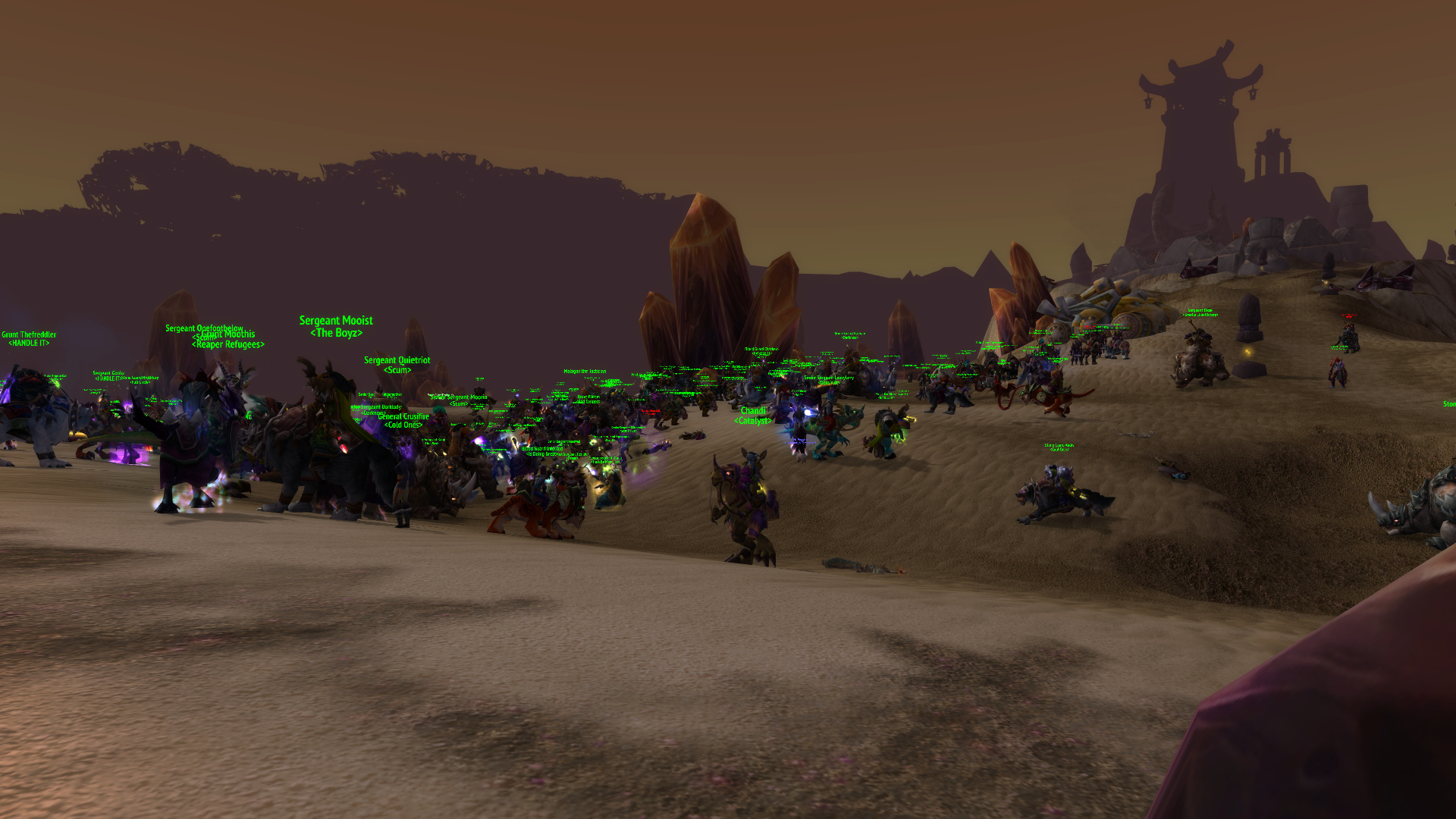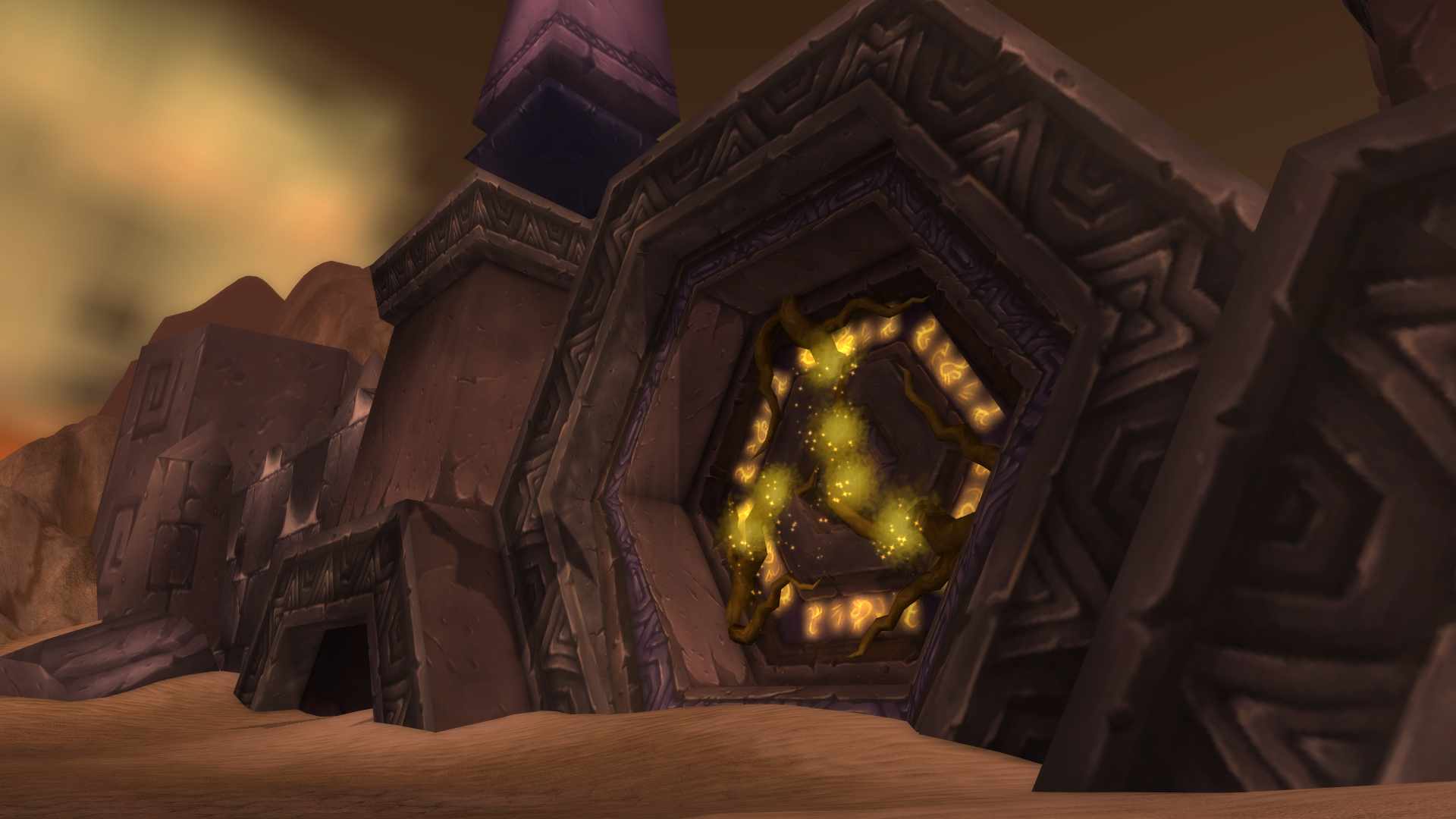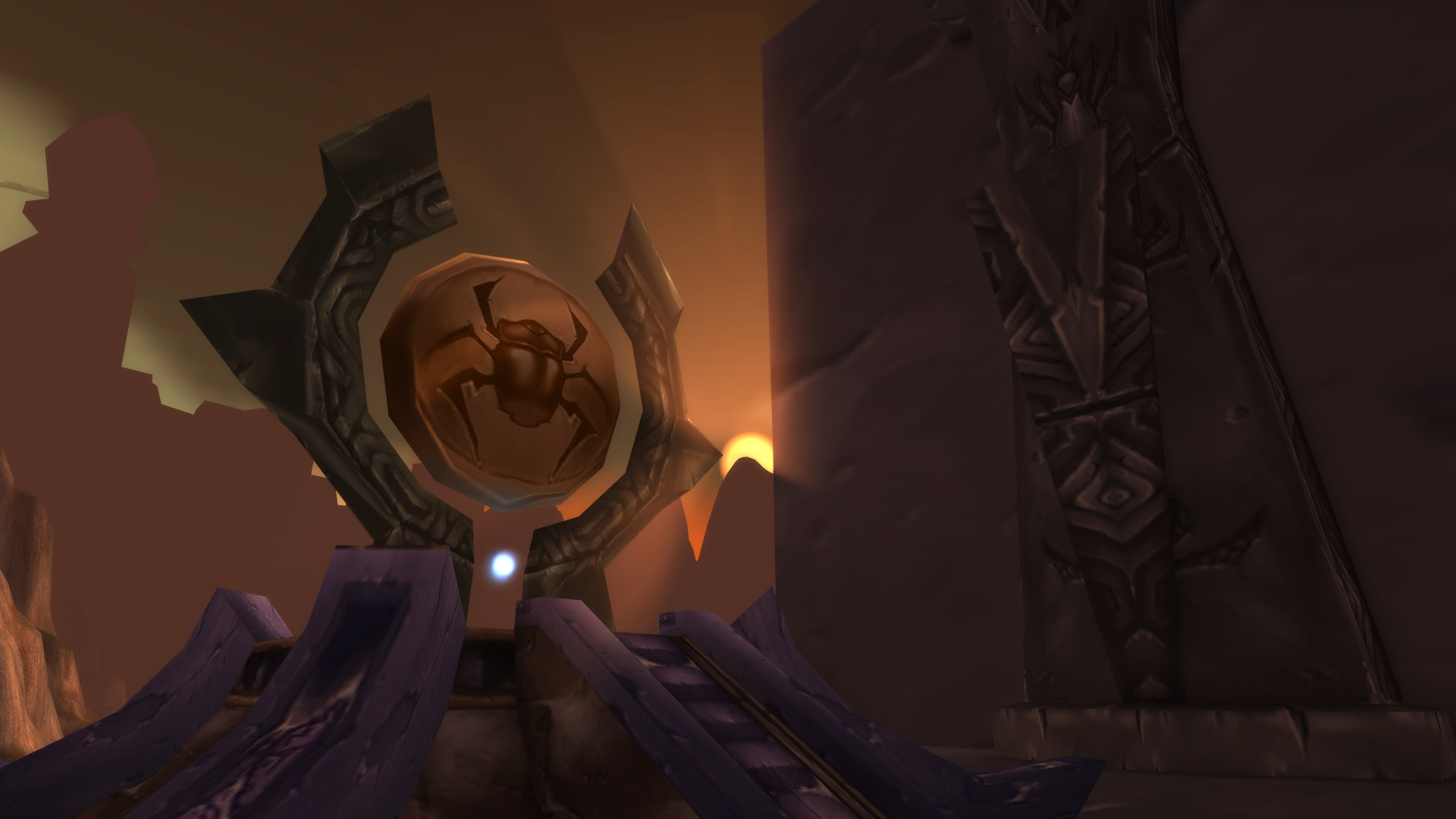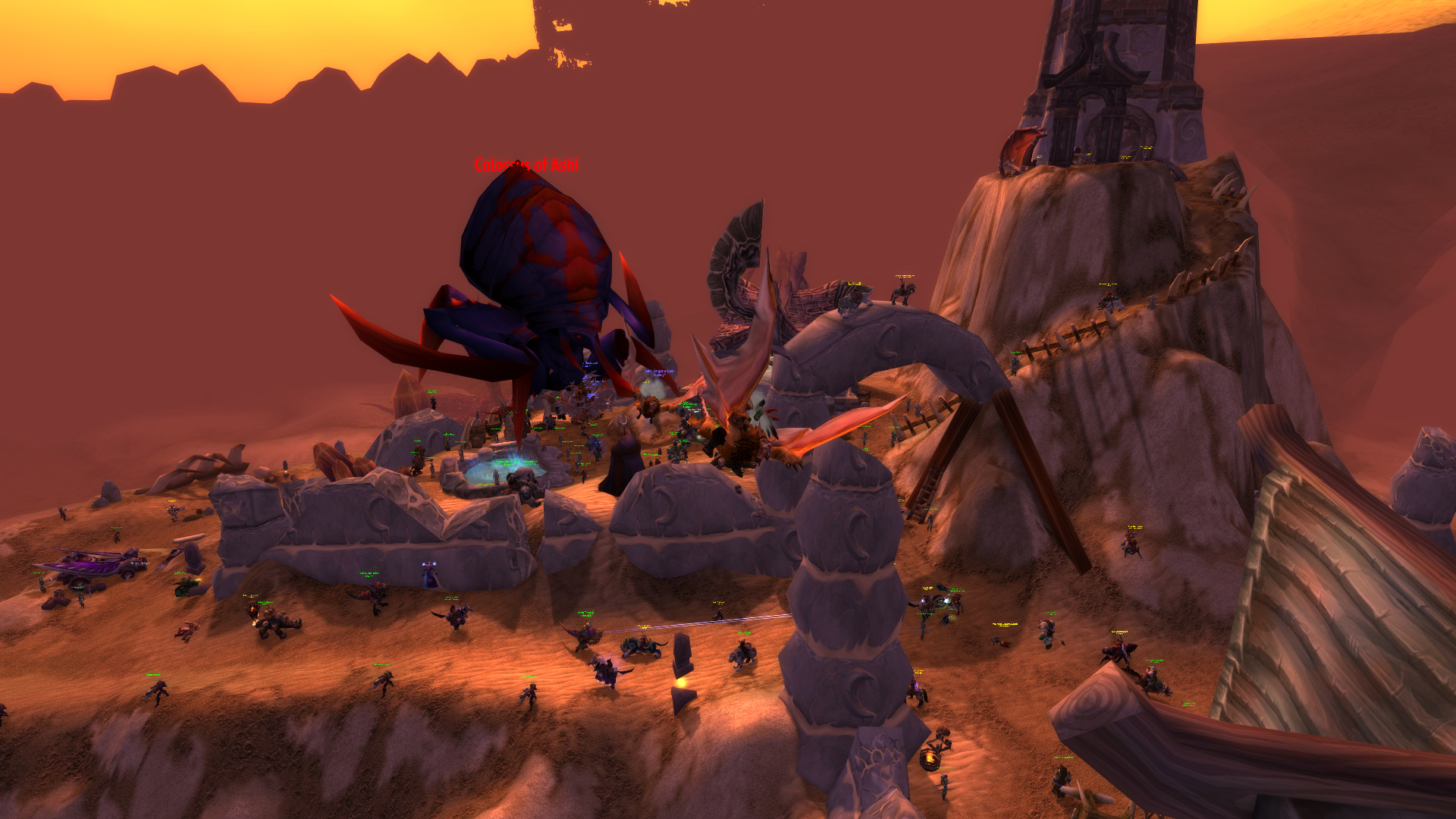Over the past two months, history has been repeating itself in World of Warcraft Classic.
To recreate the experience of playing World of Warcraft as it existed 15 years ago, developer Blizzard has been gradually re-releasing the game's dungeons in discrete "phases" since Classic launched last fall, mirroring the order in which they were released over a decade ago. In late July, Blizzard released Phase 5, and with that players could finally re-create and re-experience what is considered to be one of the most ambitious and historic events in WoW history: The opening of the Gates of Ahn'Qiraj.
Many players, like myself, might have hoped that after 14 years the event would go more smoothly and live up to its ambitions — a singular moment in which entire servers come together to experience a once-in-a-lifetime moment in-game. In 2006, the event was a technical disaster that highlighted both the incredible possibilities of an MMO like World of Warcraft and the immense difficulty of realizing them. With the event's return in Classic, it seemed like a chance to see the gates open as Blizzard always intended. Instead, a very familiar train-wreck unfolded.

But here's the really strange thing: Blizzard had options for tackling the technical issues associated with this event. It didn't have to be this way. But on some level, the developers behind Classic decided it should be this way.
What makes the Ahn'Qiraj gates opening special isn't the event itself, but rather the sheer scale and investment it requires from players. In order to open the gates both factions, Alliance and Horde, must contribute massive amounts of materials to a War Effort. Back in 2006 it took entire servers weeks and even months to complete. In addition, at least one player has to complete the Scepter of the Shifting Sands — a process that requires completing a long and complicated questline, thousands of hours of killing specific bugs to collect their carapace fragments, and essentially demands coordination between multiple guilds to realize.
It was an unprecedented event that, infamously, led to an unprecedented amount of technical issues when servers began opening gates back in 2006.
"We're not just talking server crashes (though that certainly did happen). We're talking things breaking," wrote Alex Ziebart in his recounting of the Ahn'Qiraj event for Engadget. "There was horrendous lag, hour-long queues to get onto servers, servers constantly losing peoples' locations upon death and porting them to the default graveyards in Stonetalon and Westfall, and boats doing all sorts of crazy things."
Nearly a decade and a half later, the biggest question on the minds of players wasn't so much what's going to happen once the gates open, but whether the servers would hold up in the moments leading up to it. It's something that Blizzard publicly acknowledged and tried to mitigate by stress-testing the event beforehand.
"When the War of the Shifting Sands took place the first (and only) time in 2006, thousands of players from each realm flew or hoofed it over to Silithus to partake in or witness the chaos. The turnout was beyond the development team’s wildest imaginings and, simply put, we were not prepared," the company wrote in a post-mortem breakdown two weeks after the first gate openings in Classic. "While we did manage to stabilize servers during the event, and learned quite a few lessons, we saw opportunities to do better. Fifteen years later, we were ready to recreate one of the most epic moments in WoW history for WoW Classic by focusing on server optimization to combat lag and eliminate server crashes."

On the morning of our server's gates opening, it quickly became clear that in spite of all this preparation and testing history was going to repeat itself — as it has been since the first servers began opening their gates in the beginning of August..
Over the course of an hour an absolutely awesome amount of players coalesced around the gates, transforming the space into an unintelligible, ever-shifting mass of polygons and textures. As my own computer struggled to keep up with rendering the increasing amounts of players on-screen, so did the server.
Players would suddenly freeze in place while stuck in a running animation, only to materialize in another location seconds (and sometimes even minutes) later. The amount of lag I experienced transcended frustration; it felt like I had become unstuck in time.

As much as I tried, I couldn't get any attacks off on enemy players moving on the Scarab Gong — which in the minute leading up to the ringing had morphed into a single intelligible blob of players that contained a few dozen Horde Gong Ringers and dozens more players trying to protect them from Alliance attacks. Likewise, my character seemed to move through the numerous Blizzards, Reign of Fires and Arcane Explosions being cast on me without a scratch. Because of the server's inability to keep up with everything going on, I had been literally reduced to a spectator.
And my experience was relatively positive compared to others'. At least I was there when the gong was rung. Those who died in the intra-player struggle for control over the gong, found themselves unable to resurrect and were essentially stuck watching things unfold from a muted, ghostly perspective. A number of unlucky players — at least a handful from my own guild — found themselves unable to even enter the zone surrounding Ahn'Qiraj, Silthus, as Blizzard developers put a 1,500-player limit in an effort to prevent the servers from crashing entirely.
Despite witnessing a twice-in-a-lifetime video game event, in some ways it felt anti-climactic. Narratively, the gong-ringing triggers the War of The Shifting Sands, in which the ancient bug army sealed away within Ahn'Qiraj finally pours forth and players must battle them back for the fate of the world. Mechanically, however, what you see is a number of boss enemies spawn around Silithus, and players are incentivized to kill them not to avoid any sort of fail state, but rather because these high-level NPCs have increased chances to drop epic-quality items.

In other words, what should have felt like a war against an ancient evil instead felt like a laggy struggle between players to secure these enemy spawn points to grind for loot. Although this was my first Ahn'Qiraj gates opening, for others it was their second — and if they played on private fan-run servers over the years, their third, fourth and even fifth. Not everyone was there to just experience a once-in-a-lifetime event, but rather take full advantage of the material gains it offered: a rare chance to grind out some lucrative loot drops, faction reputation points, and player-versus-player kills.
Things within Silithus became so laggy and contentious that the group I was in was essentially forced out to a nearby, lower-level zone to "participate" in the event. It felt like I was stuck at the kid's table, while the real celebration was happening elsewhere.
One player on my server, who goes by Songi, likened his second Ahn'Qiraj event to rewatching a movie. "You know the movie is fun, action packed, but while the story has been told already you get to joke with friends," he told me over Discord. In his case, he was less concerned with watching everything unfold and instead focused on roaming the zone ganking enemy players at every opportunity.
Another player, Betelgeuse, saw it as a chance to relieve one of his fondest WoW memories. "I got recruited into a group trying to tag mobs and I was told to stand in place and Hellfire non-stop," he tells me over Discord. "I had a Druid nearby that topped up my health when I got low. And for an hour I stood in one place and cast Hellfire. A simple feeling. My 16 year old self would be proud."
At the end of the 10-hour War of the Shifting Sands, a scripted encounter plays in which a group of NPCs make a final charge on Ahn'Qiraj, dealing the final blow to the ancient bug army and marking the functional opening of two new raid dungeons: The Ruins of Ahn'Qiraj and the Temple of Ahn'Qiraj.
The number of players who showed up to witness this, however, turned it into a farce. As the coalition of Alliance and Horde NPCs began their charge, led by High Overlord Saurfang, players ran around shouting live commentary as the NPCs delivered their scripted lines. Once again, the server buckled under the load of so many players in a single area, turningfinal charge into an odd, football-like drive — every few minutes the NPCs would advance 20-30 yards, stop for a few minutes and then advance again. Eventually, the scripted sequence timed out, with High Overlord Saurfang announcing victory before he and the forces he was leading, even got close to the gates.
All of this, if you can believe it, was by design. For as much as server technology has improved over the past decade and a half, and as much backend work Blizzard put in to prevent servers from crashing again, it was almost inevitable that the second opening of Ahn'Qiraj would be impacted by latency issues.
Blizzard admitted this in their own post-mortem blog post. "What we faced is a polynomial problem, which means we can’t solve it by throwing faster hardware at it because hardware’s not exponentially better," they wrote. "To illustrate this conundrum, let’s say we have 20 players jumping in a circle. The server relays the actions of each player to the other 19 through packets (data deliverables). In this group of 20, the server processes 380 packets (20 total players * 19 recipients = 380 packets). This issue compounds when more players do the same action in the zone. If we increase our example to 500 players, then 249,500 packets are sent from the server. If we increase our example again to 1,500 players then 2,248,500 packets are sent to the server."
With every player gathering in a single location, it becomes exponentially more taxing on the server, to the point where even modern server hardware cannot keep up. In other words, the Ahn'Qiraj gates opening event, as imagined by Blizzard, is nigh technically impossible. There is simply no way to host thousands of players gathering in a single area in World of Warcraft.
"Blizzard is right that throwing more servers at the problem won't help the scalability, Mark Claypool, a professor of computer science at Worcester Polytechnic Institute who specializes in video game networking, tells me over email. Instead, Claypool explained, the only option Blizzard has to mitigate the latency issues is what he calls "interest management" — essentially removing the number of effective players in a given area either by splitting the world into large parallel "layers" or smaller individual "shards" of a given zone.
It's something that Blizzard already does in the retail version of World of Warcraft, but in an effort to recreate the "feel" of Classic, Blizzard elected to only use layering at the launch of the game and eventually phase it out. With the highly-anticipated Ahn'Qiraj gates opening, layering would solve the latency issues, but completely ruin the sense that the event had brought the entire server together.
"Some may argue that allowing servers to crash is what made the original AQ war chaotic, which in turn made it memorable. Instead, we strove to cultivate that same fervor by curating a much more stable experience that could be shared with around 1,500 players in Silithus at the same time on each server," wrote Blizzard. "We wanted the memories of the Classic AQ war to be of having as many players as possible play through the 10-hour event without interruption."
What Blizzard came up with was a compromise: The aforementioned player limit, another limit on player movement data to the server to reduce the amount of updates being sent to the server, and processing the rest of the player actions in batches.
In Blizzard's estimation, with only a handful of brief server crashes over the past month as nearly 100 realms opened the gates of Ahn'Qiraj, they succeeded. But in the eyes of players, the fact that the experience was still marred by technical issues begs a fundamental question: Is it possible to experience the Ahn'Qiraj gates opening in the way it's "intended"? Will Blizzard's most ambitious in-game event always be limited by technological constraints and compromises?
According to Claypool, and Blizzard's own admission, the answer seems to be "no." The opening of the Ahn'Qiraj gates either exists as a laggy, near-incomprehensible experience, or one that's stable and smooth but you share with a fraction of the players who are actually "there." Neither arguably live up to the event's original creative vision. To truly witness that players will, yet again, have to wait for history to repeat itself.
from VICE US https://ift.tt/3iwJLaI
via cheap web hosting
No comments:
Post a Comment